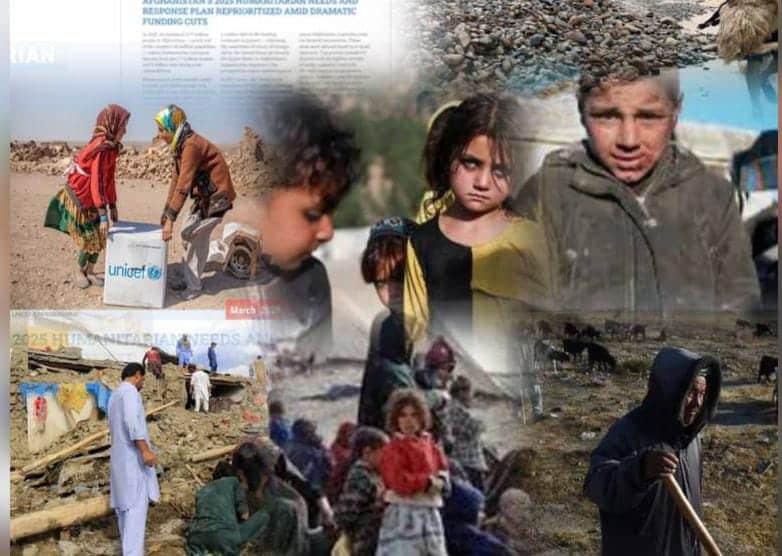In 2025, nearly 22.9 million Afghans—almost half the country’s population—are in urgent need of humanitarian assistance. However, a sharp decline in international aid, intensifying climate disasters, and ongoing political instability have combined to create a deepening humanitarian catastrophe.
According to a recent ReliefWeb report, among those affected are 5.7 million women and 5 million men living under highly vulnerable conditions.
Initially, humanitarian organizations aimed to reach 16.8 million people with life-saving support, but following the U.S. suspension of aid in January 2025, the target was reduced to 12.5 million. The original plan required $2.42 billion in funding, but only $322.4 million (just 13%) has been secured in the first quarter of 2025.
The funding cuts have triggered the closure of 220 health centers, impacting over 1.8 million people. Additionally, 400 nutrition centers have been shut down, leaving 80,000 children under five and pregnant women without critical care. Aid flights have been scaled back, resulting in job losses for hundreds of humanitarian workers.
Key services at risk include:
Emergency food and shelter
Maternal and child healthcare
Nutrition and education
Safe water and sanitation
Cash-based support for vulnerable groups
The United States, which contributed $735.7 million in 2024, accounting for 47% of the required funding, halted all humanitarian aid in early 2025—leaving a gaping void in relief efforts.
Meanwhile, climate disasters are worsening the crisis. In 2024, flash floods affected all 34 provinces, displacing over 170,000 people, destroying homes, crops, and livestock. Afghanistan’s rural economy, heavily dependent on agriculture, has been severely hit by prolonged droughts and extreme weather, driving up unemployment and deepening food insecurity.
In Kabul, water reserves have dropped by 30 meters, and experts warn that the city could face severe water shortages by 2030 if urgent investment and mitigation measures are not implemented.
UNICEF reported that over 2.1 million children were screened for malnutrition by February 2025, with more than 42,000 receiving treatments for acute health conditions.
This crisis is not only humanitarian—it’s a warning. If the international community fails to act now, the Afghan crisis could spiral further out of control.





